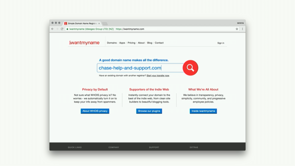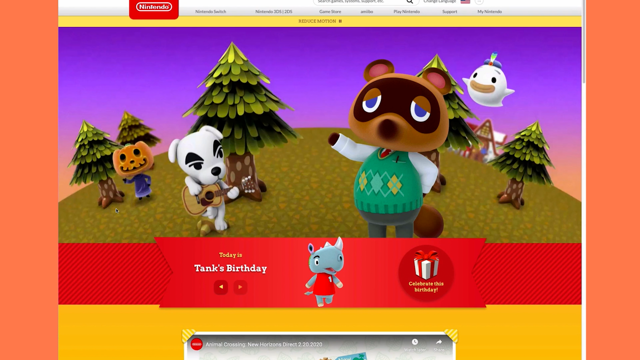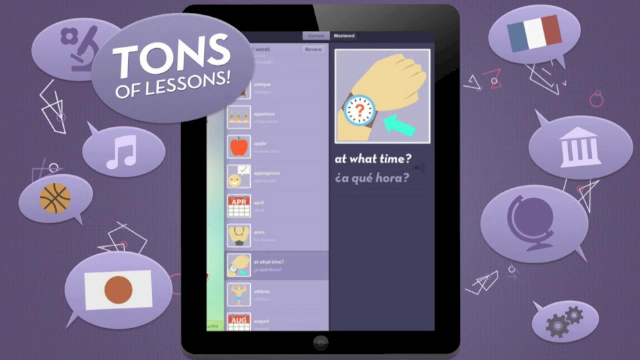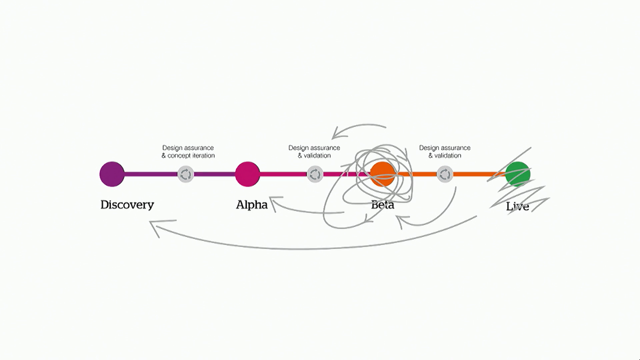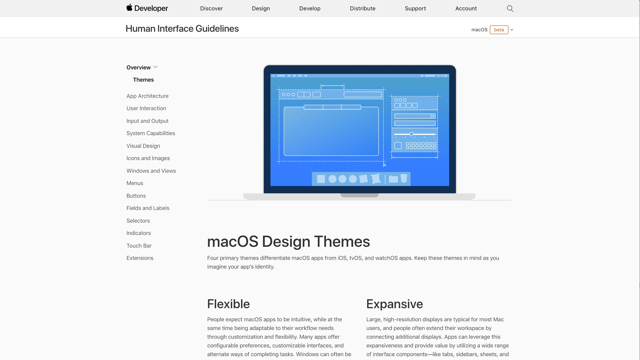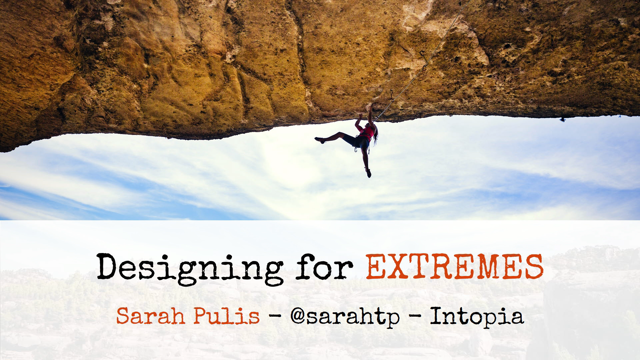
(techno music) (crowd applauding) - Hello and thank you everyone.
So politicians love to talk about the ordinary Australian. Usually it's Pauline Hanson, you know, one of our Australian politicians for anyone who's not Australian in her nasally Australian voice, trying to convince us that she speaks for the really, you know, the hard done by ordinary Australian and that she really empathises with those ordinary Australians.
But the ABC actually looked at who the ordinary Australian might be.
Using one statistical measure, if we took the most common answers to key questions in the 2016 census, then the ordinary Australian is someone who speaks English at home, is born in Australia, and whose parents are born in Australia, is Christian, has English ancestry, is married, lives with their partner, and has two children, lives in a three-bedroom house with a mortgage, has two cars, and has a yearly family income of between 104 and $130,000.
Now can I ask you, does anyone fit all these 10 characteristics here? I have one.
I have one, two.
One off.
So congratulations to you all.
You are actually all normal, except for this gentleman over here.
There's actually only roughly about 0.2% of the Australian population who actually match all of these 10 characteristics.
As characteristics grow as we, I guess, compound characteristics the chances of us meeting this fictitious concept of average becomes less. And as Australia becomes more diverse, the proportion of that share these most common characteristics across the key measures if failing. So when it comes to people there really is no such thing as normal or average or ordinary.
The myth of average is by no means something that's new. Todd Rose cites an example in his book, The End of Average.
In the 1950s the United States Air Force was struggling to understand why their pilots were struggling with the controls on planes.
As it turns out it wasn't pilot error, or it wasn't a lack of training.
What they were doing is they had designed their cockpit for what they thought was the average body size and person in the 1920s. With the help of Lt. Gilbert Daniels, they actually looked at 4,000 pilots and measured them across these 10 dimensions. Such as like torso size, chest circumference. I'm reminded at this point of my cousin, so I'm of Maltese heritage and a lot of Maltese women are short and rather wide in the hips.
Now I actually got the height, but I definitely got the widened hips.
And she calls it Duck's Disease.
So I'm sure if you sampled a whole lot of Maltese women you would probably find a whole of correlations around that, but certainly not if you went cross-culture. Now as it turns out they assumed that probably there would be some pilots that were actually within this average range and some that would fit all of these 10 dimensions. As it turns out there was no pilot that actually fit these 10 dimensions.
And even if they took three of these dimensions only about 3.5% of the pilots actually fit. In Todd's words, by designing the cockpit for the average man, they were designing the jets for nobody.
This led the Air Force to talk to their manufacturers and demand that instead of creating cockpits for this fictitious average, they needed to look at the edge cases.
And as a result they did design the cockpit, and this has led to what we commonly know today like adjustable seats in cars.
Now really there's two key points that come out of conversations like this.
The first is the acknowledgement that as individuals we are all different.
We have characteristics that vary on multiple dimensions. This could be body.
This could be our different senses.
It just could be how we learn and approach the world. We not only vary on these specific characteristics but these characteristics or how we interact with the world can change depending on our situation, our context and our environment.
And the second thing, as was shown by the example of the pilots, as designers our products and services should support both diversity and also adaptability. In a quote from Henny Swan, which is part of the inclusive design principles from the Paciello Group, she says behind every great site or application lies thought, empathy and inclusion.
This doesn't happen by accident.
It happens by design.
How we get there is as unique, original, and diverse as the people who use our products.
Now my area of specialty is digital inclusion. I started in this industry full time probably seven and a half years ago, and following enough web directions has played a fairly important part of this. So I actually met my business partner, Adam, who's sitting right over there, he's waving, at Web Directions about six years ago. And it was actually on the Saturday after Web Directions two years ago that we sat down and decided to start our company Entopia. So Web Directions actually has, it seems to be our meeting point of coming to some major decisions.
But in this time of working in, I guess, digital accessibility and inclusion, there's a few, I guess, things that I've seen change in the industry showing both Australia's maturity in how it sees diversity inclusion, but also maybe some of the things that more organisations need to embrace.
The first one is awareness.
So in 2010 the government released the Web Accessibility National Transition Strategy. And essentially it was government making a commitment to make their websites more accessible. What was interesting about this is that it was, it talked about building capability.
It talked about understanding what your assets are and how to improve them and prioritise that improvement. And it set essentially two goal posts.
It said let's get to a minimum standard by 2012 and let's get to sort of average standard by 2014. And this was measured against what in the accessibility world everyone sort of touts is the Web Content Accessibility Guidelines or WCAG 2.0.
Now the fantastic thing about the National Transition Strategy is it raised awareness of accessibility.
There was a flow and effect from this where we saw more corporates now start to be asking questions around accessibility and inclusion. And today we have many more large corporates actually looking at that and addressing that. But for government what was interesting is they definitely built capability but they were very focused on a checklist approach to diversity and inclusion.
Had they met that standard or they hadn't? Now as a result of this there were some significant improvements over that time in accessibility within the government.
But it didn't stick.
There are certain departments, for example, human services where because they have a particular focus on people and also I guess that diversity of people.
They have embraced accessibility as more a cultural shift. But for many departments the deadline came and went and it didn't stick because it wasn't part of their culture and it wasn't part of their DNA. There wasn't that ongoing recognition of diversity and inclusion, and the need to actually build for that.
As I mentioned the second important component is a cultural component.
Often, you know, accessibility is seen as a technical solution.
It's seen as something that you do at the end of the project.
We get a call at five o'clock, you know, two days before launch saying, "Could you just have check of our "website for accessibility," at which we hang our heads in despair and say, "I think you're bit of a lost cause." and then probably pull out all the stops to help them anyway.
But it is that I guess that cultural change that comes into effect.
And we've seen that I guess a little bit more with some of the corporates in Australia.
So what they are often looking at is return on investment, an untapped market.
They also might be looking at their competitors who are addressing diversity inclusion and wanting to essentially keep up with the Jones. But that has led to a little bit of more cultural approach to accessibility.
But the last area that I think we are still I guess exploring is innovation.
We're definitely seeing more talk around diversity and inclusion.
Case in point UX Australia this year, I would say, about 70% of the presentations I went to talked about some sort of diversity.
So it might be transport talking about accessibility and the access of accessible information when you're planning a trip.
But we're still often focused on just making something accessible, not necessarily actually exploring the full range of human diversity and how we can leverage it and also how we might be able to design systems that are interesting and, I guess, new services that might help people that are diverse.
I'm reminded of a colleague of mine who went to a meet up and met a person with autism. And this gentleman said that one of the best things for him was the new Australia post boxes.
So instead of having letters delivered to his house, they would be delivered to the post box let's say in the train station or the like, and he would actually get an SMS when things were delivered. So he didn't have to go out and check his post box every day.
He could actually get that notification and choose when he went.
And it was that choice of when he went also that was so important to him.
He could choose to go at a time where there were less people around so that he had less anxiety having to navigate crowds or people that surrounded him.
And he talked about how he would love that to be extended, say, even to home delivery that instead of someone knocking on the door when the came to, say, deliver a sample coffee, that he could say, look, I would like it to be left at the door.
Specifically though I'd like it to be left at the left-hand side of the door.
He would then get an SMS or other notification in the same way as the Oz post boxes and he could then choose to actually open his door and pick it up when he went.
I actually used this example in another presentation and a fellow UXer who is on the autism spectrum said I so resonate with that.
That feeling of when someone knocks on the door, I can understand that and that would be really helpful to me.
So I wonder what opportunities we're missing by just purely sometimes looking at this as an access requirement.
I can get access to it as opposed to an opportunity for innovation.
And in looking at this, I think what we need to do is change our thinking to designing through extremes for the benefit of all.
This is certainly by no means also a new concept. It's the concept of inclusive design where we are actually looking at designing for the full spectrum of human diversity. In doing so for instance, as the Microsoft Inclusive Design kit talks about, we're not just looking at a small market.
So some new statistics showed that 26,000 people might have some form of permanent disability that affects mobility such as one arm. But if we were to design for people, these 26,000 people with a permanent disability, this would also help anyone with a temporary disability whether that be you've got your arm in a sling or you have RSI.
And then lastly situational.
You're carrying around a baby.
You also have, you know, just use of one arm. Plus also new babies you might be stressed, so your level of tolerance for a system that is not easy and seamless and streamlined becomes even more pronounced.
This actually happened to a friend of mine who also works in the UX space where she was going through CentiLink.
And her usual tolerance, I guess, for things that didn't, you know, that weren't easy was just much, much lower with a new baby and getting used to all the changes that come with that.
So if we were to look at designing for all, this is a total of 21 million people according to US statistics.
So it's shifting from the proverbial small market which is often the push back we get when we talk about accessibility as disability but more to accessibility as inclusion.
In Emily's presentation yesterday she talked about giving feedback, and she talked about how we don't always know what might be closing someone to do something such as being late.
The well known ice berg principle talks about how we can only see about 10% of an ice berg which is above the surface.
And the 90% underneath is hidden from us.
And I think that's the concept sometimes where with diversity and inclusion.
They were not always digging below the surface. For instance 3 million Australians live with depression or anxiety, an estimated 2 million of Australians have dyslexia. 11 million Australians will experience a mental health condition during their lifetime. Over 4 million Australians in Australia have some form of disability, and 44% of adults lack the literacy skills required for every day life.
These are things that we might have statistics but we don't necessarily have a real understanding of how it impacts people's lives, and also what we can do and how we can innovate and build our products so that they are more usable for everyone.
So things we can do.
Diversity and research.
A lot of the projects I work on we don't actually get to do a lot of research with diverse uses.
But there was a wonderful presentation at Alley Camp actually that was here in Sydney this year, from Lily and Mira, from the DTA.
And they spoke about the digital identity project that they're working on.
And this project is actually looking at creating an online system that allows you to prove your identity without having to go into a shop front.
They talked about the diverse uses that they talked about, they talked to at least.
People who were from low socio-economic backgrounds or had other challenges.
One of the interesting things they found was around transgender.
So for people who are transgender there is anxiety of going in store.
They're faced without knowing whether the person they're going to talk to will be accepting or understanding or even the people around them that might actually be overhearing their conversations will also be understanding.
And in some cases the research showed that this prejudice was crippling for them. Some people actually had different views in documentation.
So some people were quite happy with discrepancies on their documentation, perhaps their birth certificate had one gender but later documentation had another.
Others were very adamant that they wanted a single gender on that documentation.
And some despite what they might feel could not actually change all the documentation 'cause it was cost prohibitive.
And so they looked at this type of research and it showed a few things.
First of all this was the extreme.
This was a system where we needed to be able to cater for I guess data anomalies that we might normally think shouldn't be catered for. But also they talked about the fact that instead of a system where a case is too hard and you said, "Sorry, you can't complete this online," and push them back to a store front that for people such as this who might be worried or crippled by the thought of going into a storefront, it wasn't good enough to have a system that actually couldn't accommodate for this. The next one, a fairly easy one, using inclusive design principles or universal design principles.
I'm actually subscribed to the fact that we actually can't design for every single person. Human diversity is just too diverse.
But if we do follow inclusive design principles then what we're doing is we're building for as many people as possible even if project constraints mean that we can't do some of that wonderful research that we talked about. And lastly diversity and testing.
In recent years in Australia where I've seen us move from a compliance field towards accessibility and in particularly I guess that disability space. To organisations understanding that accessibility is really just a part of usability.
And in understanding that, that we can't measure how accessible a site is by a set of requirements or a checklist.
And so including diverse users in testing becomes even more important.
And no one is fallible.
My colleague was working on a project.
She's been working in the accessibility space for five years and she said to me, you know, she designed up this beautiful interface, this component that she thought was going to work perfectly. And I actually came in and then did some usability testing for that same project.
And we put that component in front of a number of screen ready users, so users that are blind that are using technology to essentially read out what's on the screen and it failed miserably.
No one knew how to use it.
It was perfectly and utterly compliant if you had to put it in front of me and asked me to do a a compliance check against it, I could not fault it.
And even on paper it looked fantastic.
But you stuck it in front of a user and it just didn't work.
So we need to change our concept.
This is not a bad, also adding people to our research base or our testing base.
We should actually look at this as a whole. And in finding out what is important or so, testing with users on those extremes, we often find out what is important also for the people in the middle band, the median, and it becomes a better experience for all. I'm going to leave you with a thought.
I called this presentation designing for extremes. But in reality what I think we need to get to is instead of seeing these things as extremes or seeing people as extremes, we want to see them as normal.
Dr. Thomas Armstrong, author of many books on the topic of autism, writes about neurodiversity. Neurodiversity is a term that has more recently come about that is talking about I guess the diversity in neurological patterns. And he says neurodiversity includes an exploration of what has thus far been considered mental disorders of neurological origin.
But they may instead represent alternative forms of natural human difference.
We are all different and we should embrace those differences in ourselves and in others. Thank you.
(crowd applauding) (techno music)

